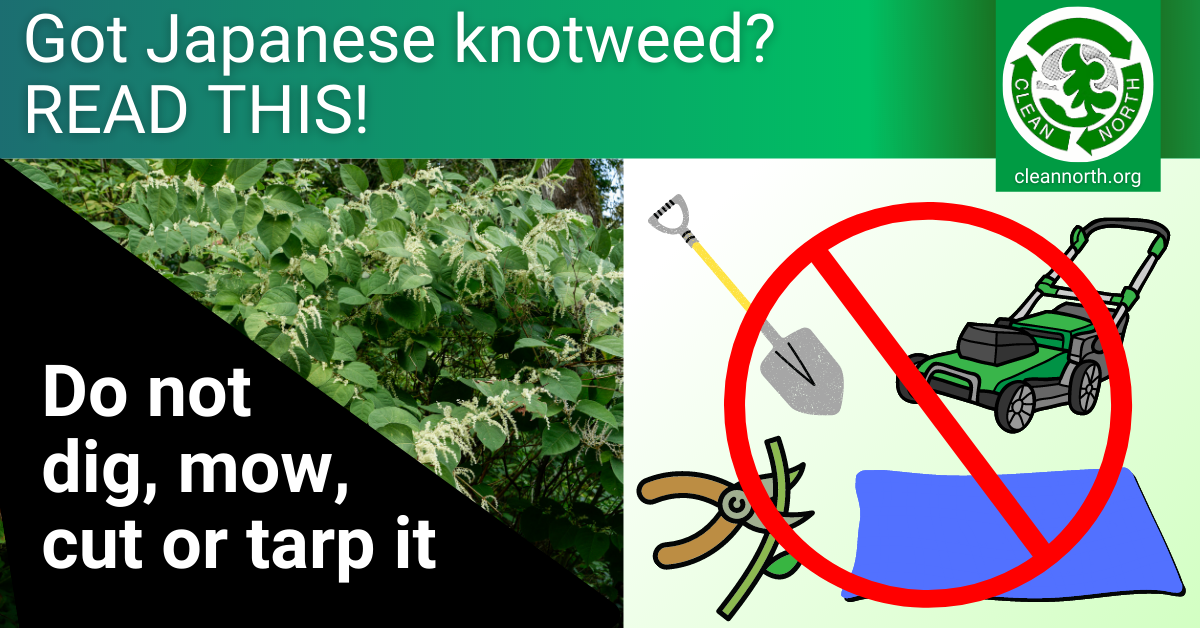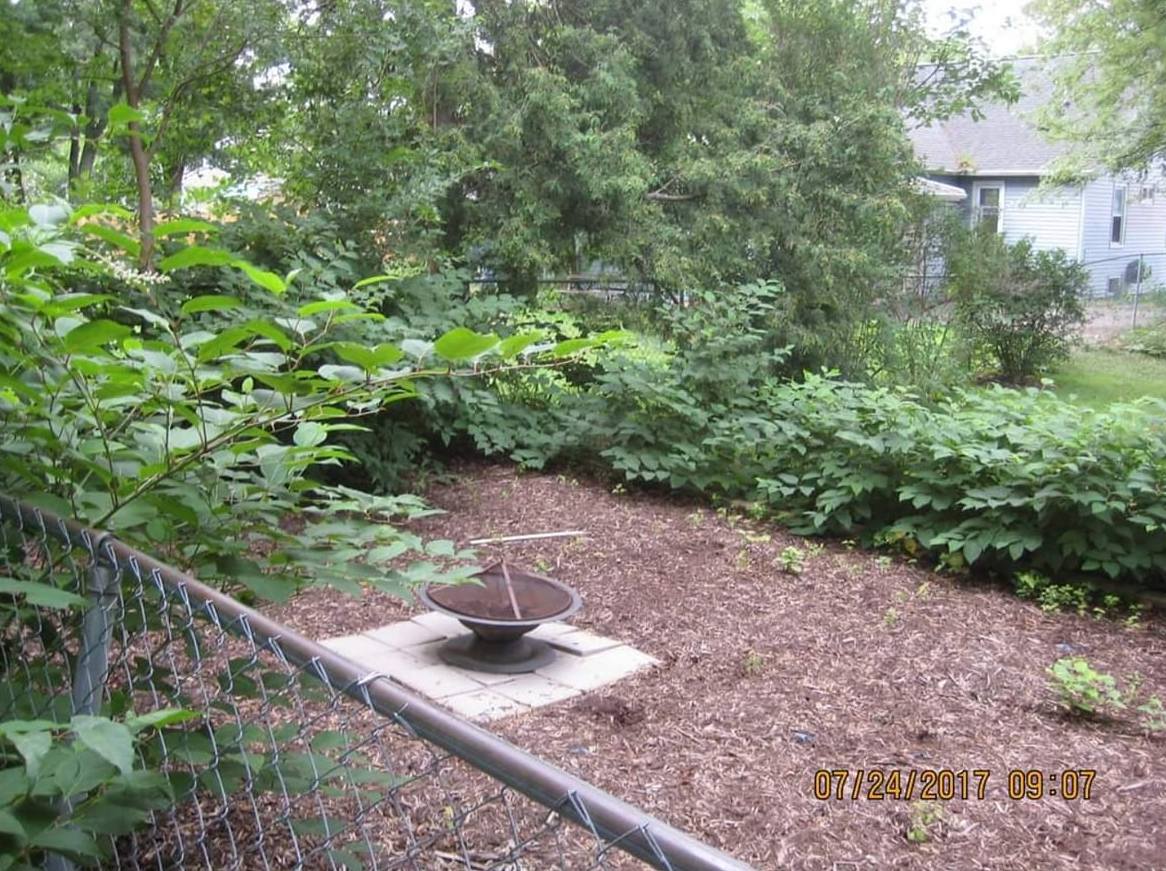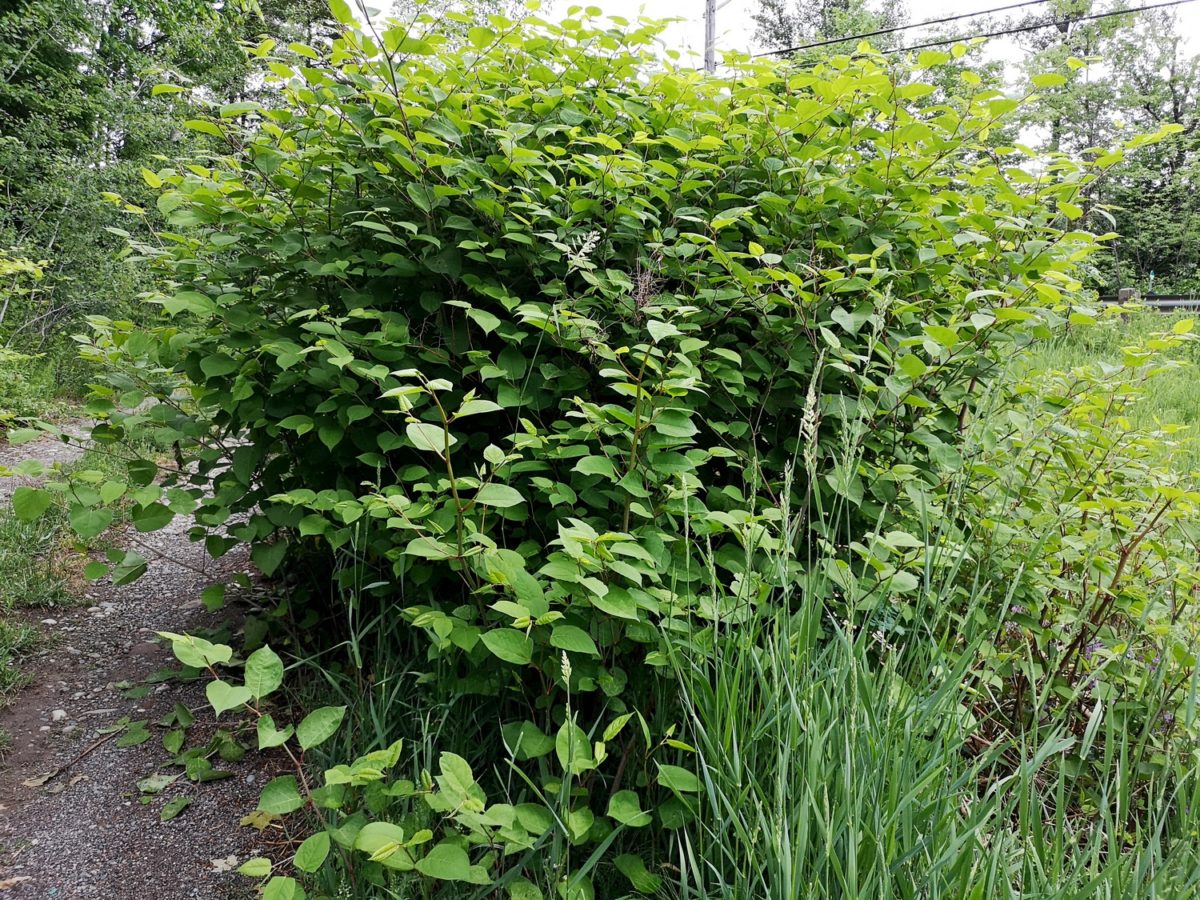
Japanese knotweed is one of the most frustrating and damaging invasive species in Canada—but many Canadian websites are dispensing advice that could make a bad invasion even worse. The best available science shows that “poking the bear”—digging, mowing, cutting, and/or tarping—is not effective and can cause knotweed’s large underground root system to “roar back” at you, in other words, launch a massive growing spree. The best available science shows that the most effective control method is applying glyphosate weedkiller during a specific window in late summer.
Top tips: Watch this short video on what “knot” to do with knotweed
Join the Canada Knotweed Support Group on Facebook
Other resources listed at the bottom of this page!
Don’t underestimate knotweed
Japanese knotweed is one of the most resilient organisms on Earth, evolved to survive hot lava flows. Its roots or rhizomes can grow more than 10 feet deep and 35+ feet beyond where you see aboveground stems. The root system can stay dormant for more than 20 years, just waiting for a chance to pop up again.
The traditional physical methods of controlling invasive plants—cutting or mowing the tops off, digging plants out, tarping—don’t work. In fact, “poking” knotweed can spur massive lateral root growth. Then you may begin to see patches cropping up metres away from the first infestation—including in your neighbours’ yards. One woman in a invasive species group in Facebook described how she tarped knotweed on one side of her house and it sent runners 50+ feet under her house and started a new patch over there! Another person tarped their knotweed and built a patio over the former patch—and knotweed began coming up all around the new patio.

The Japanese knotweed in this Kalamazoo, Mich. yard was tarped, covered with mulch, and then used as a patio. What happened next? The knotweed simply expanded its root system beyond the patio. Photo: Hannah Hudson.
Another hazard related to cutting, mowing, or digging out knotweed: If just a tiny piece of root or stem gets tracked to or dropped at a new location, that can start a new stand. It takes only a piece of stem the size of your thumbnail or a root the size of a pinch of salt.
Many new stands have cropped up because people cut or dug out knotweed and dumped it in a natural area.

Japanese knotweed stand near a river off Fourth Line in Sault Ste. Marie, Ont. It likely sprouted here because a nearby homeowner cut their knotweed and dumped the debris. Dumping yard waste is a prime way invasive plant species travel to new locations.
Moving soil that may have knotweed root fragments in it can also lead to new stands. People with knotweed in their yard should not share plants with others or move plants to their camps.
So what do I do if I have Japanese knotweed?
First, get a firm ID
Here is one in depth guide to identifying it.
Do not cut, mow, or dig it
Resist the urge to attack knotweed with a mower, string trimmer, or shovel. Any method other than applying glyphosate will likely stimulate this plant’s root system to go on a growing spree. Remember, don’t poke the bear!
Remember that cut, mowed, or dug-out knotweed plant material is like a time bomb. If you scatter bits of it around your yard, new plants will likely grow. If you seal it in a trash bag and send it to the landfill, it can start growing inside the bag, break through the bag, and start a new stand at the landfill.
In the UK, knotweed plant material is considered controlled waste! It’s against the law to put it in with your regular trash. That speaks volumes about how damaging this plant can be.
If you burn knotweed in a firepit and miss a piece of root, you may end up with a new patch in your firepit. Remember, this plant is adapted to lava flows.
If knotweed is in your yard or a neighbour’s, think twice about sharing plants from your yard with friends, selling them, or moving them to a new home or your camp. Roots hidden in soil are another common method of spread.
The herbicide route
If you are in Ontario and are determined to control your infestation, contact the local Ministry of Natural Resources and Forestry Office and ask for a letter of opinion to allow you to hire a licensed herbicide applicator. Keep in mind that glyphosate controls rather than eradicates Japanese knotweed. Eradication is nearly impossible.
To maximize the amount of herbicide carried to knotweed’s root system, spraying should be done after flowering but at least two weeks before the first frost.
But aren’t herbicides illegal in Ontario?
It is illegal and frankly unethical for homeowners to use herbicides for cosmetic purposes, for example, to kill dandelions because you don’t like the way they make your lawn look. Use the most benign method possible to control a given weed/invasive plant.
Japanese knotweed, however, poses special challenges. Plus it’s illegal to own, buy, or sell it in Ontario. Thus, you may be allowed to hire a licensed herbicide applicator to spray it.
FYI: Herbicides may be used without a permit when there is a threat to health and safety, for example, blocked visibility at a road/intersection, potential threat to human health, fire hazard, or a threat to a building’s structural integrity (ONTARIO REGULATION 63/09, Herbicide Use and Regulations in Ontario).
What if you are against any use of herbicide?
Then your best bet is to leave it alone. The more you try to manage it physically, the worse it will likely get. Remember, knotweed loves to be disturbed. And also remember that it poses a very serious threat of harm to ecosystems.
How damaging is Japanese knotweed?
Here in Sault Ste. Marie, Japanese knotweed is causing major headaches for property owners and gardeners and invading local natural areas, where it crowds out native plants. When native plants disappear, populations of native insects, birds, and other wildlife may also be disrupted. It’s currently expanding in Birchwood Park in the East End, which has many native plants. Knotweed is also starting to crop up in area forests and at people’s camps.
In the United Kingdom, Japanese knotweed is causing massive hassles for property owners. It’s taking over people’s land, affecting property values, and making it harder for people to sell their home or get a mortgage. It can contribute to damaging foundations, walls, pathways, and drainage systems. UK courts are now awarding damages for encroaching Japanese knotweed.
If we don’t want to end up like the UK, we need to take the knotweed problem seriously and not to make it worse. Don’t trigger it to spread by mowing, cutting or digging it—and take special care to prevent any plant parts moving to a new location.
Where can I learn more?
- Join the Canada Knotweed Support Group
- Read this 2018 scientific journal article, which documented that only glyphosate effectively controls knotweed
- Read the Greater Vancouver Invasive Species Council Best Management Guide for Knotweed Species
- Watch a short Greater Vancouver Invasive Species Council video on what knot to do with knotweed
- Check out what the UK’s Royal Horticultural Society has to say about knotweed
- Read a detailed Guardian article on knotweed
- Read this article on the most sustainable method of dealing with knotweed
Questions?
Email us at cleannorth.org.




